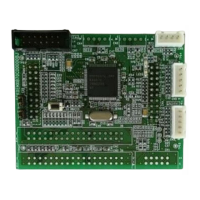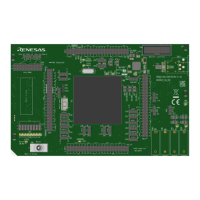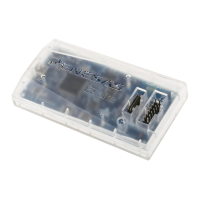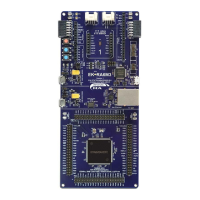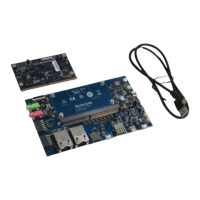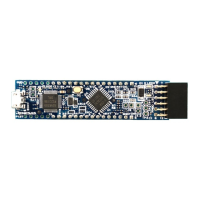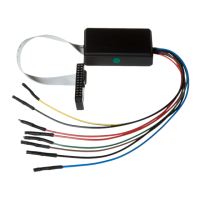Section 2 CPU
Rev. 7.00 Mar 10, 2005 page 71 of 652
REJ09B0042-0700
2. Bit manipulation in a register containing a write-only bit
Example 3: BCLR instruction executed designating port 3 control register PCR3
As in the examples above, P3
7
and P3
6
are input pins, with a low-level signal input at P3
7
and a
high-level signal at P3
6
. The remaining pins, P3
5
to P3
0
, are output pins that output low-level
signals. In this example, the BCLR instruction is used to change pin P3
0
to an input port. It is
assumed that a high-level signal will be input to this input pin.
[A: Prior to executing BCLR]
P3
7
P3
6
P3
5
P3
4
P3
3
P3
2
P3
1
P3
0
Input/output Input Input Output Output Output Output Output Output
Pin state Low level High level Low level Low level Low level Low level Low level Low level
PCR300111111
PDR310000000
[B: BCLR instruction executed]
BCLR #0 , @PCR3 The BCLR instruction is executed designating PCR3.
[C: After executing BCLR]
P3
7
P3
6
P3
5
P3
4
P3
3
P3
2
P3
1
P3
0
Input/output Output Output Output Output Output Output Output Input
Pin state Low level High level Low level Low level Low level Low level Low level High level
PCR3 1 1 111110
PDR310000000
[D: Explanation of how BCLR operates]
When the BCLR instruction is executed, first the CPU reads PCR3. Since PCR3 is a write-only
register, the CPU reads a value of H'FF, even though the PCR3 value is actually H'3F.
Next, the CPU clears bit 0 in the read data to 0, changing the data to H'FE. Finally, this value
(H'FE) is written to PCR3 and BCLR instruction execution ends.
As a result of this operation, bit 0 in PCR3 becomes 0, making P3
0
an input port. However, bits 7
and 6 in PCR3 change to 1, so that P3
7
and P3
6
change from input pins to output pins.
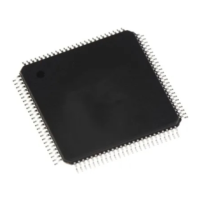
